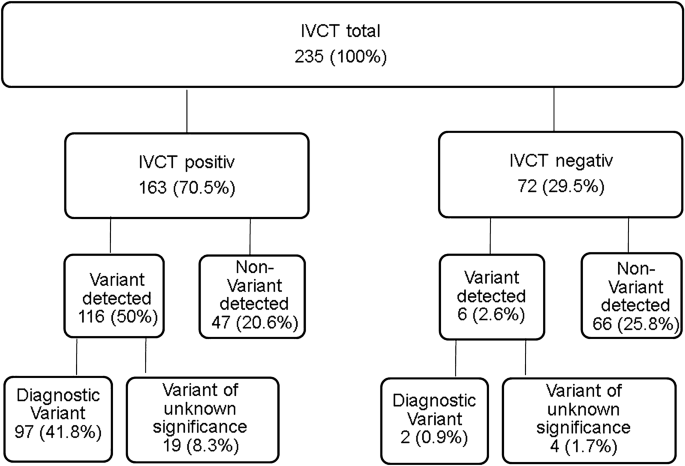The emhg has published guidelines on the availability of dantrolene:
malignant hyperthermia is an uncommon pharmacogenetic disorder of skeletal muscle. Obtain abg to rule out: The following diagram and accompanying text represent guidelines issued by the ambulatory surgery foundation, affiliated with the ambulatory surgical center association (asc association), and the malignant hyperthermia association of the united states (mhaus) to be utilized in the development of an emergent mh transfer plan for suspected mh. In vitro contracture test for diagnosis of malignant hyperthermia following the protocol of the european mh group: The emhg has published guidelines on the availability of dantrolene:

This hypermetabolic crisis is most often triggered in susceptible persons by the administration of volatile anesthetics and.
To give the patient the best possible chance for a successful outcome, a swift, coordinated, multidisciplinary team response is necessary. From 2011 through 2015, inspection This demonstrates just how much of this training program was borrowed from the college of anaesthetists. These guidelines were developed by members of the european malignant hyperthermia group based on available literature and a formal consensus process. › posted at 5 days ago A malignant hyperthermia (mh) crisis is a medical emergency. Symptoms include muscle rigidity, high fever, and a fast heart rate. D50 1 amp iv (25 g dextrose) + regular insulin 10 units iv. A previous apparently uneventful general anaesthetic does not exclude the possibility of a malignant hyperthermia (mh) reaction on subsequent exposure to mh triggering drugs. In people who are affected, some anaesthetic drugs can cause a rapid and dangerous rise in body temperature. Identify and treat malignant hyperthermia (mh) in the intraoperative setting in an organized team. Hopkins pm, girard t, dalay s, et al. Death can occur within 24 hours.
The emhg has published guidelines on the availability of dantrolene: Death can occur within 24 hours. This hypermetabolic crisis is most often triggered in susceptible persons by the administration of volatile anesthetics and. From 2011 through 2015, inspection findings at eight. Dantrolene is used to treat limb muscle rigidity and myoglobinuria.

Give calcium chloride 1 g iv;
Question 10 from the second paper of 2003 demands that the icu trainees discuss malignant hyperthermia, a complication of anaesthesia. malignant hyperthermia in north america from 1987 to 2006: A malignant hyperthermia (mh) crisis is a medical emergency. malignant hyperthermia study abnormal in vitro contracture test/ total number in vitro contracture tests performed malandrini, et al. To read more, click on the link. Hopkins pm, girard t, dalay s, et al. Guidelines for the management of a malignant hyperthermia crisis successful treatment of a malignant hyperthermia (mh) crisis depends on early diagnosis and aggressive treatment. Guideline from the association of anaesthetists. If symptoms persist, discontinue volatile agents and succinylcholine. This problem runs in families (genetic). This severe reaction typically includes a dangerously high body temperature, rigid muscles or spasms, a rapid heart rate, and other symptoms. malignant hyperthermia (mh) is a rare autosomal dominant condition, that can present as an acute emergency in susceptible individuals following exposure to a trigger agent such as volatile anaesthetic agents or suxamethonium. This means it's passed down from parents to children.
malignant hyperthermia is an uncommon pharmacogenetic disorder of skeletal muscle. It has autosomal dominant inheritance with an incidence of approximately 1:40,000 anaesthetics administered in adults and 1:15,000 in children. Go to malignant hyperthermia, event #18. From 2011 through 2015, inspection If symptoms persist, discontinue volatile agents and succinylcholine.

Patients with a history of mh should be evaluated and treated immediately.
Mh occurrence with a nondepolarizing nm blocker is a very rare phenomenon. Guideline from the association of anaesthetists. This demonstrates just how much of this training program was borrowed from the college of anaesthetists. When it does occur, it happens fast. malignant hyperthermia (mh) is a rare autosomal dominant condition, that can present as an acute emergency in susceptible individuals following exposure to a trigger agent such as volatile anaesthetic agents or suxamethonium. The north american malignant hyperthermia registry (namhr) was established in 1987 and merged with the malignant hyperthermia association of the united states (mhaus) in 1995 so that data on malignant hyperthermia (mh) could be stored in a site that is supported by one organization (mhaus). Symptoms include muscle rigidity, high fever, and a fast heart rate. The malignant hyperthermia association of the united states, the ambulatory surgery foundation, and the society for ambulatory anesthesia have jointly developed transfer guidelines for patients who develop acute mh in an asc. Call for help and inform theatre team of problem, note the time. Previous uneventful anaesthesia does not exclude mh. Guidelines from the european malignant hyperthermia group. Larach mg, localio ar, allen gc, denborough ma, ellis fr, gronert ga, kaplan rf, muldoon sm, nelson te, ording h, rosenberg. During an mh crisis event, a patient's metabolism speeds up, and the body begins to break down skeletal muscle tissue.
15+ Malignant Hyperthermia Algorithm PNG. The onset of a reaction can be within minutes of induction or may be more insidious. The problem is severe and life threatening, but it can be treated. Identify and treat malignant hyperthermia (mh) in the intraoperative setting in an organized team. Previous uneventful anaesthesia does not exclude mh. Go to malignant hyperthermia, event #18.
The malignant hyperthermia association of the united states, the ambulatory surgery foundation, and the society for ambulatory anesthesia have jointly developed transfer guidelines for patients who develop acute mh in an asc malignant hyperthermia. Mh occurrence with a nondepolarizing nm blocker is a very rare phenomenon.






